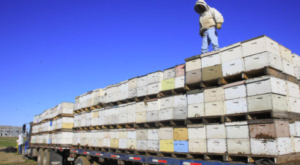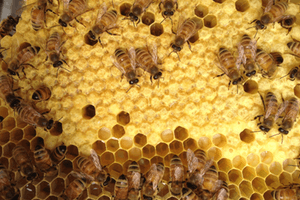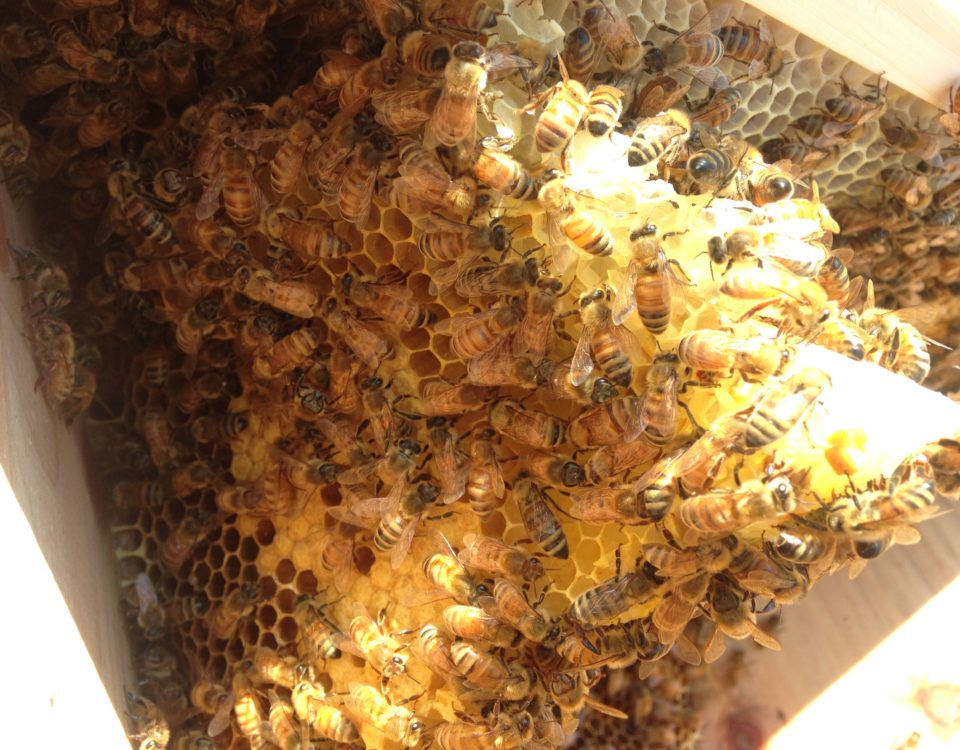- All-In-One Beekeeping for the Bees
- +1-608-728-8233
- info@beepods.com
Honey Bees Vs. Highways

The Bee Enclosure Module (BEM) was an aluminum box designed to hold over 3400 worker bees and one queen for the student experiment "A Comparison of Honeycomb Structures Built by Apis millifera (SE82-17)." Investigators studied the effects of microgravity on the comb building activities of honeybees.
When you think of packing up to go on a road trip, most of you don’t envision seeing a bunch of honey bees on the highway with you. Don’t be surprised if the giant semi next to you is carrying a truckload of honey bees. The truth is, nearly 2 million honey bee colonies are transported each year and a good chunk of these bees are on the road right next to you. Honey bees are taken from all over the world and transported in trucks in order to increase pollination at farms. Since more than 80 percent of crop species require pollination, this is a growing business.
These commercial pollination services have a tight window to get their bees to these farms. Growers on these farms only have a brief period for their crops to be pollinated and so these pollination services often have to act quickly. You will hear many farms telling commercial beekeepers to transport their hives by truck, sometimes across the country, in order to help their fields bloom.
This may seem like a good idea – bring honey bees to places in order to pollinate crops and flowers. These services are providing a way for farmers to grow crops that we eat – but the truth is, this process can be very harmful to honey bees. These honey bee colonies are being transported at highway speeds, and sometimes through mountains. The dangers that arise with transporting these honey bees across the country can vary from overheating/chilling, suffocation, and the overall loss of colonies.
Overheating, Chilling Temperatures, and Suffocation
With long travels, windy roads, and changing weather conditions, this can be a tough life for honey bee colonies. By the time they reach their destination – maybe it’s in California to pollinate almond orchards – there may be few honey bees left. Colonies that are not very strong to start have a worse chance of surviving the long road ahead. Colonies with fewer than 10 frames will most likely not make it. This colony would not be big and the bees could not thermo – regulate in order to prevent chilling causing them to potentially die off. Depending on which way the hive box is loaded into the semi-truck the opening aisles may cause air turbulence which will greatly affect the hive if the outside temperature is low.

On the flip side, internal temperatures are also a great cause for risk. Internal hive temperatures can vary significantly based on location of the hive within the truck. Colonies that are located in the front or rear of the truck near the center aisle had a more regular internal temperature but many studies have shown that the biggest factor of internal temperature was the size of the colony. If you have a large colony, there is bigger room for the hive to overheat and kill off the honey bees. You want to keep the internal temperatures around 90-95 degrees Fahrenheit as deviations from this range are stressful and life threatening. Above this range, your honey bees will likely suffocate and die. Below this range, the colonies have a larger chance of surviving but the cold exposure to the hive will eventually cause them to die off.
These low temperatures are specifically detrimental to brood in the hives. Exposure to these temperatures for a long period of time causes developmental abnormalities in brood. Lower temperatures for longer durations cause capped brood to have a higher mortality rate and a higher chance of abnormalities.
Parting Thoughts
The number of pollination specialists has increased, which is good for the beekeepers who are renting out their colonies. However, one thing that’s not so great about this shift in industry practices is that it only serves to increase honey bee colony stress and mortality rates at an alarming rate. We cannot ignore the harmful effects this has on honey bee colonies. The more we rely on commercial pollination services, the less our bees are able to do their work for us. It is up to all of us—from farmers and growers who need crops year-round to everyday consumers looking for healthy food options—to take action now in order to save the bees! There are many ways you can help support these vital insects, starting with planting wildflowers around your home or garden so they have a place to eat during winter months when there isn’t much else available.
Elizabeth Allon
Latest posts by Elizabeth Allon (see all)
- Short But Mighty: The Stages of Life - January 26, 2022
- Honey Bees Vs. Highways - January 19, 2022
- 4 Ways to Save The Bees in 2022 - January 12, 2022



